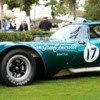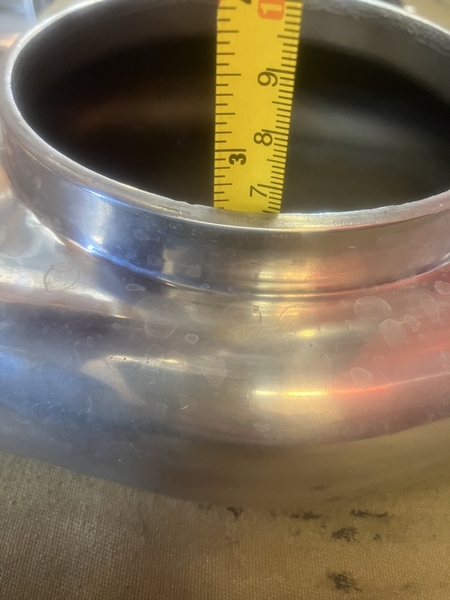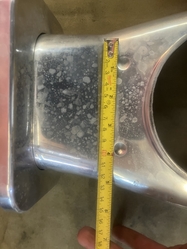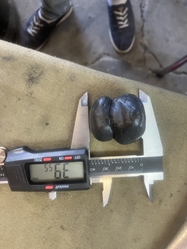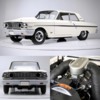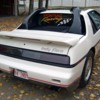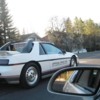Can you (or anyone else) explain… because I can not figure out the difference….
… in an engine where you would have the carburetor attached with a tube to the cylinder (motorcycle) and you would increase the length of this intake manifold you would at some point experience the problem of keeping the fuel suspended in the air.. while velocity stack (carb and injected) on the breathing side increases the fuel/air charge in the cylinder (column of air keeps pushing) This is not what I’m going for… I’m looking for pur air delivery!
i just don’t see the difference between EFI and Carburetor in regards to air only delivery!
yes, there is a boundary layer inside the tube that doesn’t move because of friction caused by the tube surface but add 1/2” to diameter should take care of that..
Looking at the EFI setup the hoses are anything but “streamlined”
The original air cleaner has a snorkel on it for about 12 inches long…
would a 4 inch diameter tube 30 inches long be more restrictive?
I would like to know….
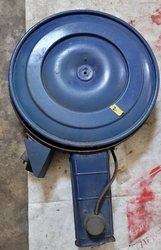
it’s not about “everyone is a critic “ or the song thing… but just going for “because I say so” doesn’t count…
I don't really know why but with carbs a very long air tube becomes an issue at some point OR what that length may be but it may be that when you extend the air intake length at some points it effects the Venturi principle? Maybe loss of critical velocity through the venturi? I don't know but usually in a car there isn't enough room to make the tube too long so it isn't normally a problem?
I do remember the '64 Ford Fairlanes with the High Rise 427's with their long 4" diameter air tubes that went under the front bumper. Since I never ran that setup, I don't know what issues if any that it caused? Perhaps because it was intended for racing, the useful rpm range of the engine created enough velocity through the hoses? Back then a 7,000 rpm engine was a big deal.
Some of the '60s GM cars like the Olds W-30s used the long 4" hoses like that also. They looked a lot like the insulated flexible air conditioning hoses that are used now in houses.
I've always seen the preferred induction solution as a short velocity stack on the carbs themselves like you would run on Weber 48ida's and as close to "out of the engine compartment air" as possible.
Think of Bill Thomas' Cheeta with the carbs themselves sticking right through the hood with open velocity stack on the carbs.
I would think that you need to state things in mathematical terms or equations like Albert Einstein did to see the critical factor in the equation? I can't write the equation. My head doesn't work that way. You would probably have to get a carb engineer from someone like Holley to explain anything.
I just know the empirical method. Build it until it works.
I do also know that what was referred to in the 1960's as "cold ram air induction" has limitations because the ducting at some point becomes restrictive. It has also been pretty much proven that there was little to no "ram air effect". The benefit was actually from cooler air being brought in from outside the hot engine compartment but if you notice where the most effective locations of cold air was, a "hood scoop" directly over the carbs?
Seemingly most solutions have advantages and disadvantages. Mid-engined cars are "land-locked" for cold air. The Pantera is no exception.
You probably have seen the "snorkel" that sticks up over the back of the roof and plumbs "outside" air to the carb/s on many race cars? That really is what the "sugar scoop" is doing but some find it not an "aesthetically pleasing" solution.
To me, the term "Form follows function" is an Architectural term for justifying an ugly building or solution?
The Pantera "Bat Ears", i.e., the side scoops that replace the rear 1/4 glass, stick up like that because the wind tunnel testing showed they had to reach up into the air flow and below that point, there was dead air.
One of my customers/clients is a "high performance aircraft engineer". To put it bluntly, not only do we not get along, we don't even like each other. Basically because my interests are in cars and to him that is as low on the evolutionary ladder as an ameba?
With fuel injection the Venturi principle is not involved but how the shot of fuel splashes to atomize the fuel near the intake valve is.
There with EFI the cpu adjusts for the temp of the air being taken in so supplying the induction with colder air doesn't matter much since the computuer adjust the fuel flow to the injectors to maximize the power according to the A/F ratio menu that it is reading from.
Nothing to be gained from colder air there.
...oh, and for me posting isn't a "because I said so" thing. It certainly isn't intended as a lecturing. It is just posting about the good, the bad and the ugly that I have done. If it helps anyone at all, even a little, fine. If not, just consider it the ravings of a maniacal, disillusioned individual that comes here for therapeutic reasons and ignore it.
My wife ignores me all of the time...well most of the time anyway. So that ground has already been laid. Literally.
Actually she thinks that I need hearing aids. I don't think yet that she realizes I just don't pay any attention to her?





